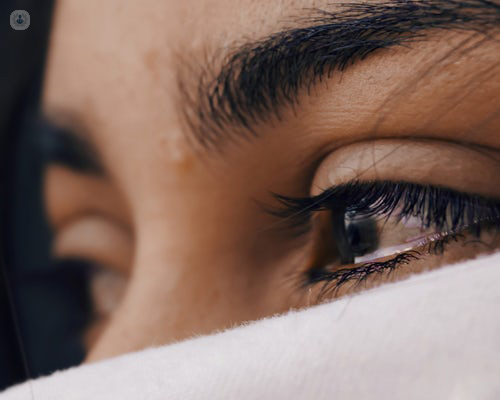Age-related macular degeneration and low vision
Autore:Here, Mr Praveen Patel, award-winning consultant ophthalmologist, provides an expert insight into low vision as a result of age-related macular degeneration.

What is considered low vision?
Low vision is when problems with sight, such as blurred vision, cannot be corrected with glasses, contact lenses or by any medical or surgical treatment. One of the most important and common causes is age-related macular degeneration (AMD). When people suffer sight loss, it's important that they see an optometrist urgently to find out the cause of why their vision has changed.
What causes vision to change?
Sometimes changes in vision are due to getting older and needing glasses. However, sometimes people can develop other symptoms, such as straight lines looking bent or wobbly; difficulty seeing when lighting is poor (for example, at night); or a dark or blurred spot appearing in the vision. These sorts of changes in vision could indicate the development of AMD, and if people do develop these symptoms it’s important to see an optometrist or an opthalmologist (eye doctor).
AMD is a condition in which vision loss or low vision can result from the death of light-detecting cells (photoreceptors) in the retina (the light-sensing layer at the back of the eye - like film in a camera).
How can we prevent low vision from age-related macular degeneration?
To avoid low vision resulting from AMD, it's important to find out the type and severity that is causing vision loss. In dry AMD, the death of light-detecting cells means that there can be a blind spot in the vision. There are no effective treatments for dry AMD but magnification devices can help people to read and help overcome some of the difficulties arising from low vision.
For people with wet AMD, where fragile blood vessels grow into the retina causing damage to light-detecting cells, early diagnosis and treatment with eye injections can help prevent low vision. Early diagnosis is crucial and it’s important to see an eye doctor specialising in the assessment and treatment of wet AMD. The medicine in the eye injections is designed to block the action of the chemical which causes fragile blood vessels to leak and bleed.
Some patients have both wet and dry AMD in the same eye and eye injections may not be as effective in this case. This is because although the injections are effective in treating wet AMD, they do not prevent dry AMD from getting worse. Eye injections need to be given on a repeated basis for wet AMD as they do not cure the condition, and the underlying blood vessel can start bleeding again when the effect of the medicine wears off.


